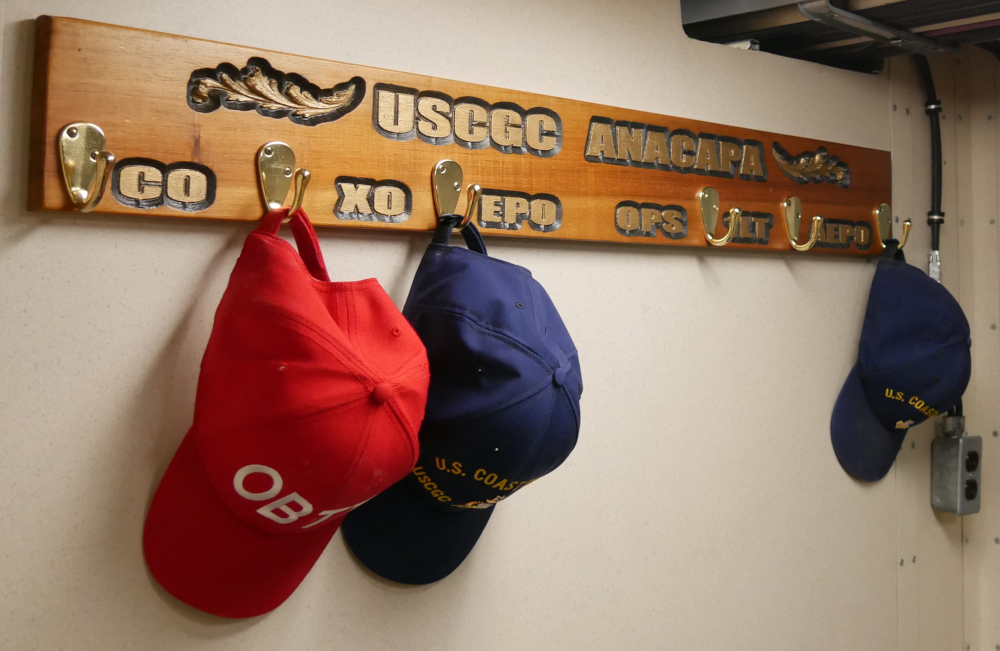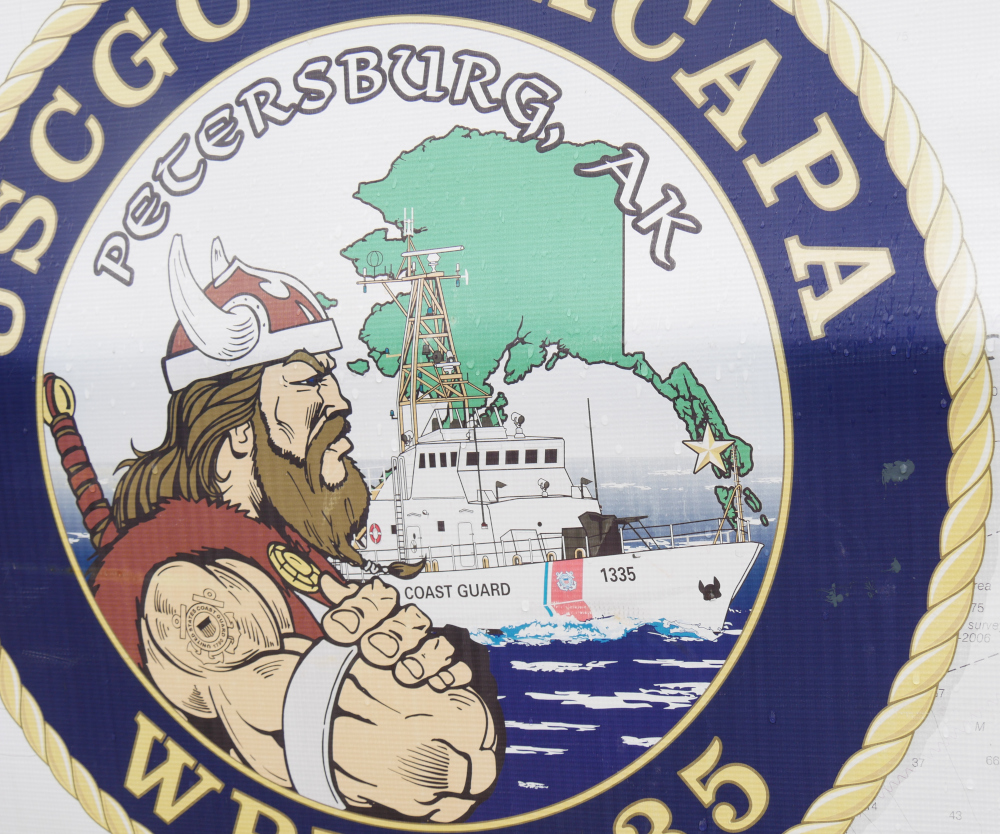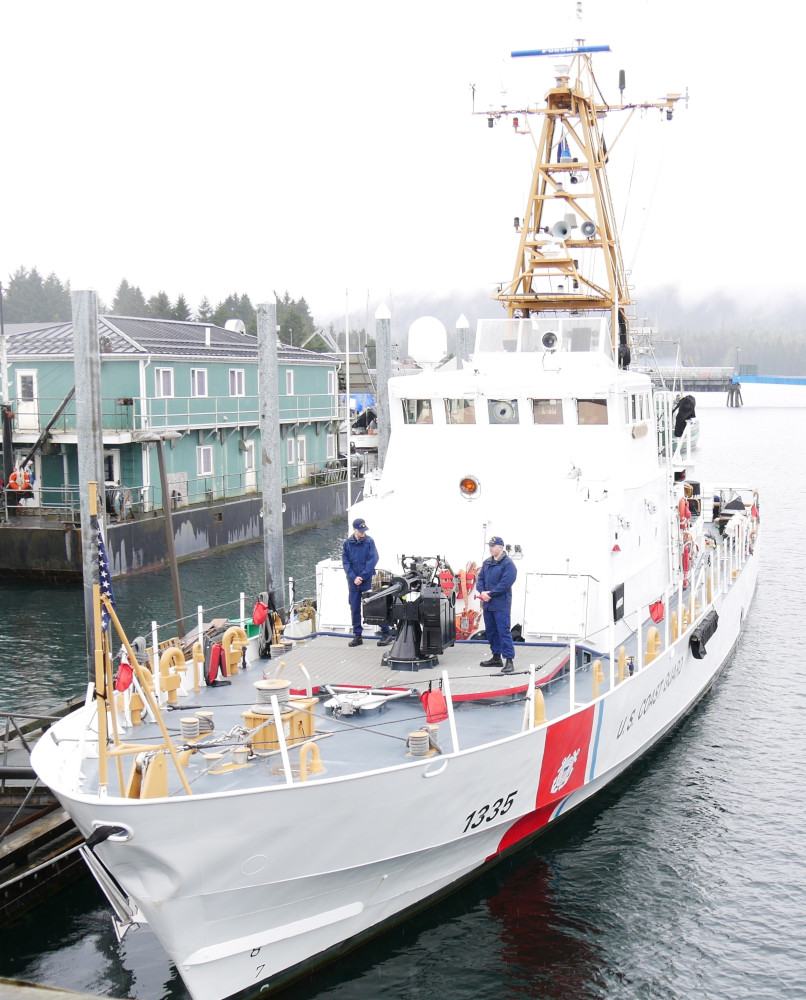
The U.S. Coast Guard cutter Anacapa is leaving Petersburg this year after more than three decades of fisheries law enforcement, rescues and patrols in Southeast Alaska. The Coast Guard plans to reassign the vessel after an overhaul. The captain and crew of ship welcomed the community for tours this week as they get set to depart Alaska.
“I will say watch your steps and watch your heads, there are some lower spots on the boat,” petty officer second class Caleb Tower lead one of the tours of the ship offered to the community, Monday, April 25, 2022.
“You’ll see when we get to the berthing areas, there’s not a lot of room,” Tower said. “There’s not a lot of creature comforts on this boat. This boat is to do a mission. Where the newer boats, the (Fast Response Cutters), the 154s down in Ketchikan, they’re built to a commercial standard. So it’s much more luxurious, essentially take a yacht and put guns on it and say it’s for the Coast Guard. Those are the FRCs. This boat was designed to do a mission. We do the mission pretty well.”
The FRCs are 154 foot replacements that are being deployed to other Alaskan ports. Local officials fought to keep a cutter stationed in Petersburg after the military branch announced plans to replace the 110-foot Island class ships like the Anacapa. Named after an island in California, the Anacapa arrived in Petersburg and was commissioned in 1990.
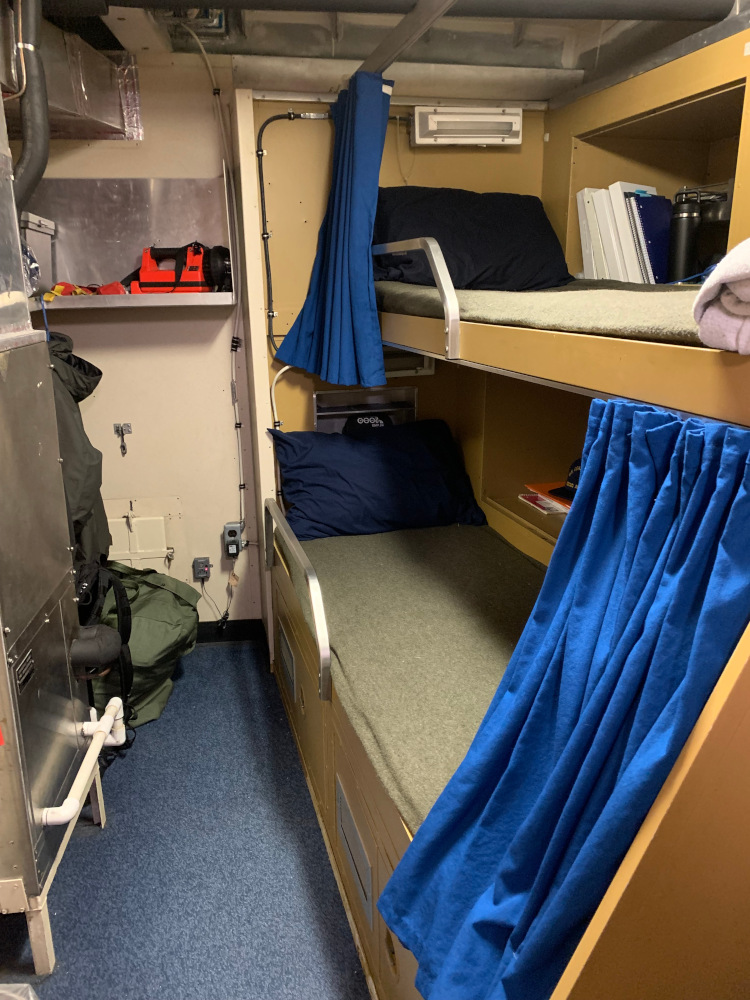
Tower said the constant use in Alaska is hard on a 30-year-old ship.
“The only other boat I’ve been on that is equivalent to what we do here in Alaska is over in the Middle East, over in PATFORSWA (Patrol Forces Southwest Asia),” he said. “And it’s high op(erational) tempo, constantly just go, go, go, go. So the boat gets tired, it’s a 30-year-old boat. She’s tired. But she’s in very good condition for her age.”
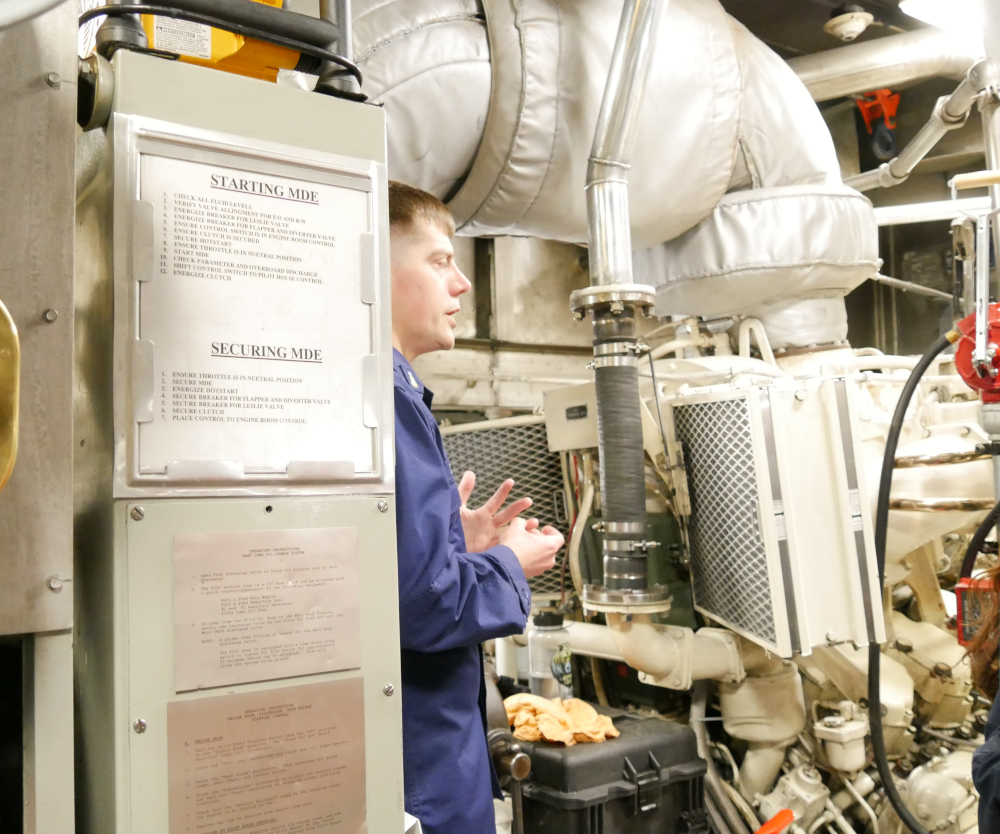
Deep in the stern, senior chief petty officer Jeffrey Wilkes showed off the two large engines for propulsion and two for electrical power. At top speed, the ship can burn around 300 gallons an hour. At lower speeds it can go almost 5,000 nautical miles on a tank of gas. Wilkes said its been challenging to be on an older ship.
“It’s getting harder and harder to maintain the asset with the limited resources, parts are hard to find. Logistics, getting parts in and out is probably the hardest,” he explained.
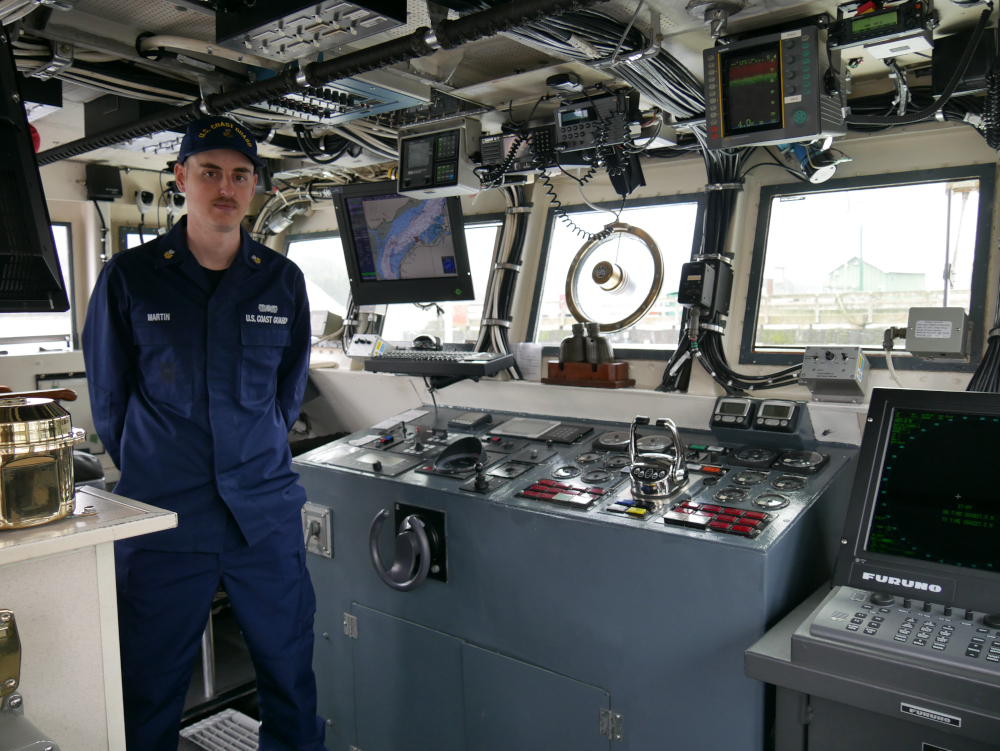
The Anacapa heads to Ketchikan and will spend about a month there, swapping out engines and generators before heading to its new homeport, Port Angeles, Washington. A new crew takes over there and this Petersburg crew heads to new postings. It’s bittersweet for some on board, including Wilkes.
“The town has been real welcoming to me and my family, my kids, my wife works at the school. We just love it here but work-wise it’s been a difficult tour,” Wilkes said.
The Anacapa was to be decommissioned, but that’s no longer the plan; it will be replacing one that’s in worse shape. The crew says there are maybe a dozen of the 110s left in the Coast Guard and this one may have another two to five years.
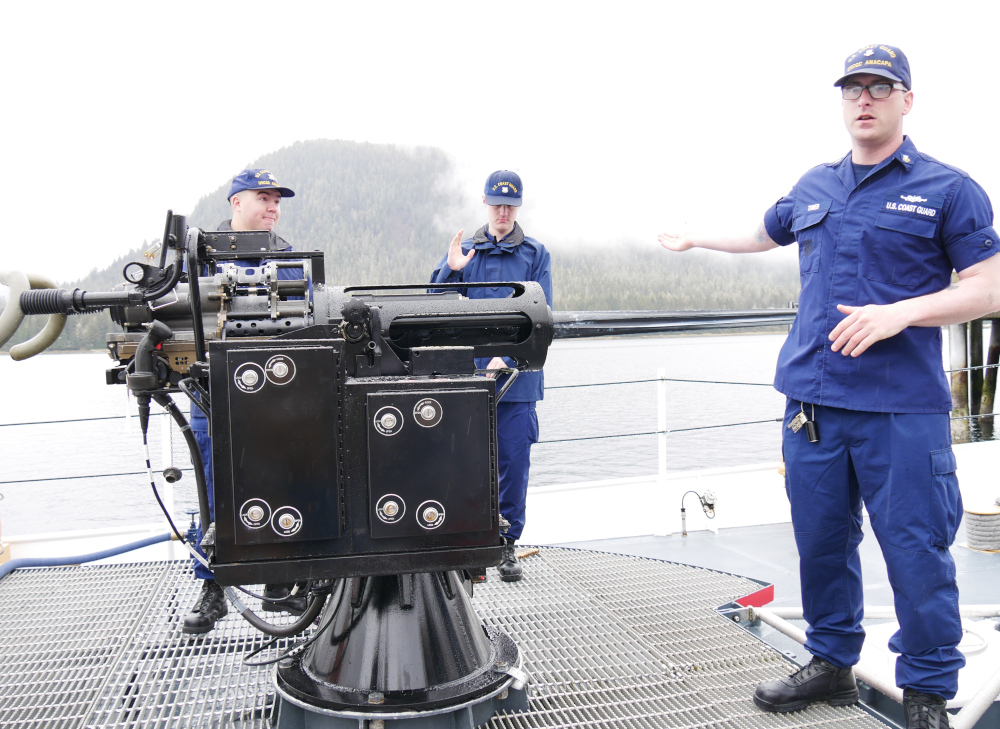
Out on the front deck gunner’s mate second class Tower shows the 25 millimeter cannon that’s usually kept under cover.
“It’s a fun gun to shoot,” he said. “It shoots about 175 rounds per minute. It’s SAPHEI-T rounds, which stands for Semi-Armor Piercing High-Explosive Incendiary Tracer. Really fun to shoot.”
That gun has an effective range of around 2700 yards and normally takes two or three crew to load and shoot. The Anacapa also has two 50 caliber machine guns and some smaller arms onboard.
In 2012 the crew used the cannon to scuttle a derelict Japanese fishing boat that wound up off the coast of Alaska following the Fukushima tsunami.
Like other law enforcement patrols the ship has angered fishermen when armed crew come on board and send boats back to port early for missing safety gear. And it’s earned their gratitude for plucking mariners from the hull of a sinking ship. Over the years the Anacapa has responded to natural disasters, freed entangled whales, searched for missing aircraft and hunters and brought a Christmas tree to the state capital and clothes to community shelters. The ship was at the border with Canada in 1999 when a fishing dispute ensnarled a Petersburg fisherman. And it’s been through the Panana Canal and back for a major overhaul at a Baltimore shipyard in 2009.
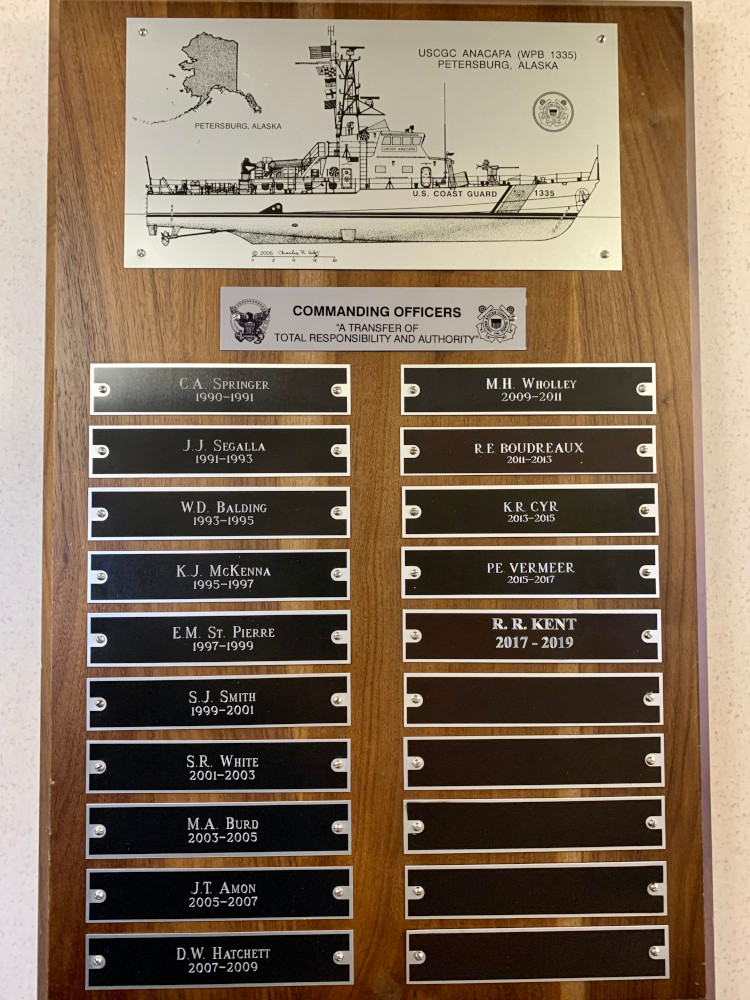
Michaela McKeown has been commanding officer on the Anacapa for about a year. It’s her first command.
“Captain Steve White was one of the previous commanding officers here and he actually officiated for the change of command, when I took command,” McKeown said. “It was neat, full circle. I had met him up in Kodiak on the Alex Haley when I was a cadet and overlapped when I was on the John McCormick in Ketchikan. So it was full circle. He came in for the change of command and then I went up for his retirement. So that was pretty neat.”
The CO said the ship has character and said it’s been a privilege to work with her crew. McKeown said one of the tougher missions during her time was a search and rescue, or SAR, for a sailboat in distress north of Sitka
“The weather was rough of course as it is with SAR cases,” she said. “We did the whole thing where we steamed through the night, got there first light in the morning and went into this remote bay and had to come up with a pretty creative plan. We used our small boat to get the sailboat under tow and then transfer the tow over to the cutter and were able to rescue the sailboat and the couple individuals onboard and bring them back to Sitka. And that was just truly a team effort. We’d had a pretty serious engineering casualty just a few days before. So engineers worked through the night to get the cutter back up.”
The Anacapa’s replacement in Petersburg is an 87-foot San Francisco-based Marine Protector class cutter called the Pike, built in 2005. The smaller ship means around 7 fewer crew.
The Anacapa leaves Petersburg this weekend for a month Ketchikan before sailing to Port Angeles, Washington. The Pike is expected to arrive in Petersburg in June.
